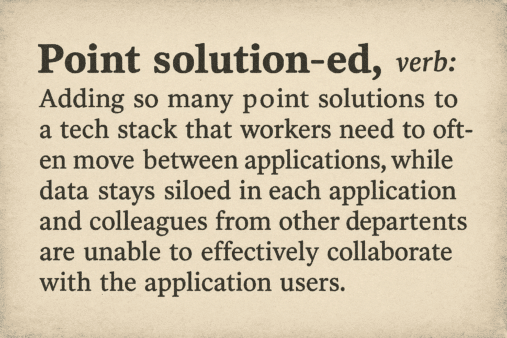
As you likely know, there are now 15,384 martech solutions on the market, thanks to an update earlier this month to the annual census taken by Scott Brinker and Frans Riemersma as part of their Martech Day event.
Its remarkable growth doesn’t even include all the custom GPTs and home-grown apps marketers are building with AI tools. The growth has slowed over the years, but that’s a sign of a mature market and the inevitable consolidation and M&A that comes with growing up.
Of course, some of that M&A took place when large enterprise software companies bought specialized solutions. Oracle bought Eloqua. Salesforce bought Pardot. The list goes on.
The idea of the all-in-one marketing suite from Supergiant Software, which also dealt with infrastructure (and later in the cloud) and likely supplied other areas of the organization, like finance or HR, with their software, appealed to some people. There was one vendor to manage. One throat to choke. One contract to sign.
One counterpoint to the all-encompassing platform was point solutions. Get the best tool for each job, because as great as Supergiant Software’s CRM is, its social media management platform looks to be built by fourth graders.
And yes, there was more to manage when you dealt with point solutions, but they were usually somewhat easy to procure and inexpensive compared to the big players.

You work in your tool, and I’ll work in mine
Here’s the thing. Despite all the tools — whether you buy from Supergiant Software or Sally’s House of Social Media — and the influx of AI, businesses are run by people.
People use the tools. People create what they input into the tools. People review what the tools spit out. And in marketing, there’s an element of creativity and imagination that goes into everything, whether you’re a creative or you’re an analyst or operator turning data into a story.
All of this work requires collaboration, some of it within teams, and some of it with other teams. Those other teams like to use their own tools. Those other teams have their own priorities. Those other teams call meetings when it’s time to collaborate because what they see in their tool isn’t something you can see in yours.
Two companies with one story
Last week, I had the opportunity to talk to marketers from two software vendors about their latest product launches.
If you’re a regular MarTech reader, you probably know I’m talking about Databricks and Amplitude.
Both companies told me shockingly similar stories.
- Both made tools designed mainly for departments that were not marketing.
- Despite that, both had a lot of users in marketing roles.
- Both were now adding functionality to specifically address the role of marketing.
For Databricks, marketing was already a top-five use case for its platform. Its new platform, Data Intelligence for Marketing, brings together the roles that care about data and risk, such as CTO, CIO and CDO, with marketers who care about the data generated by campaigns and customers.
Dig deeper: Overcoming fear of better options in martech decisions
In the case of Amplitude, it’s a product built for product teams creating digital products. Now, it includes the data marketers need, putting all involved in PLG’s acquire-retain-upsell/cross-sell flywheel in one application.
While speaking to Amplitude CMO Tifenn Dano Kawn, I stumbled into inventing a new word when asking, “Have we point solution-ed our way into madness?”

The next day, I reached out to Brinker, the “godfather of martech,” editor of Chiefmartec.com, and VP of the platform ecosystem at HubSpot. Surely, a marketing landscape with more than 15,000 tools has many point solutions.
What does the ‘godfather of martech’ have to say?
“The most exciting thing happening in martech is the spanning across departments. It unlocks so much more data, insights and customer touchpoints and surface areas for marketers,” Brinker said. “Products like Databricks and Snowflake that are org-wide are a real boon to integrating marketing more deeply into the business (and vice versa). It’s why we’ve seen such a shift from stand-alone CDP databases to ‘composable’ ones that tap directly into those cloud data warehouses/lakehouses.”
However, instances where teams collaborate inside a martech application are still relatively rare, and for good reason. Brinker said most jobs remain specific to an individual, and when that individual works in marketing, that’s a martech app. A marketing automation platform, for example, is only of real use to a marketer.
“There’s a long tail of ‘point solutions’ to tackle a long tail of jobs to be done,” Brinker said. “For some of these jobs, more generic platforms can be used instead of point solutions — this is where the frontier is with a lot of AI assistants and data infrastructure plays like Databricks. But for plenty of others, the point solution can be a perfect fit.”
That last point is essential. How do the point solutions your team uses or aspiring to use fit in your organization? How do they fit the use cases, the rest of the stack. the team’s resources and its data strategy?
If it’s a good fit and a good deal, then it’s worth it. But we know that’s not always the case.
So have we point solution-ed our way to martech madness? Surely some of us have.
The post Have we point solution-ed ourselves into martech madness? appeared first on MarTech.
